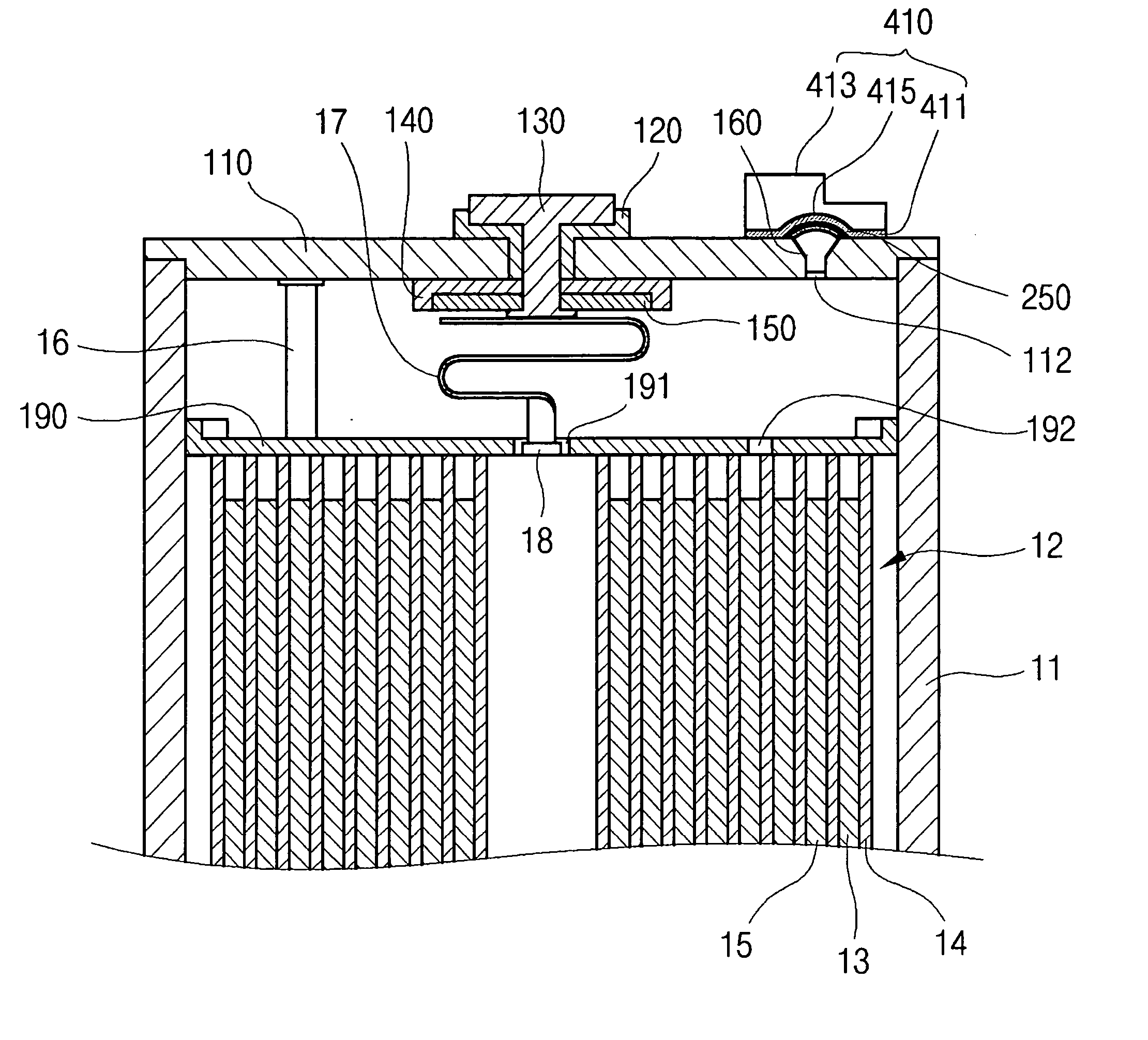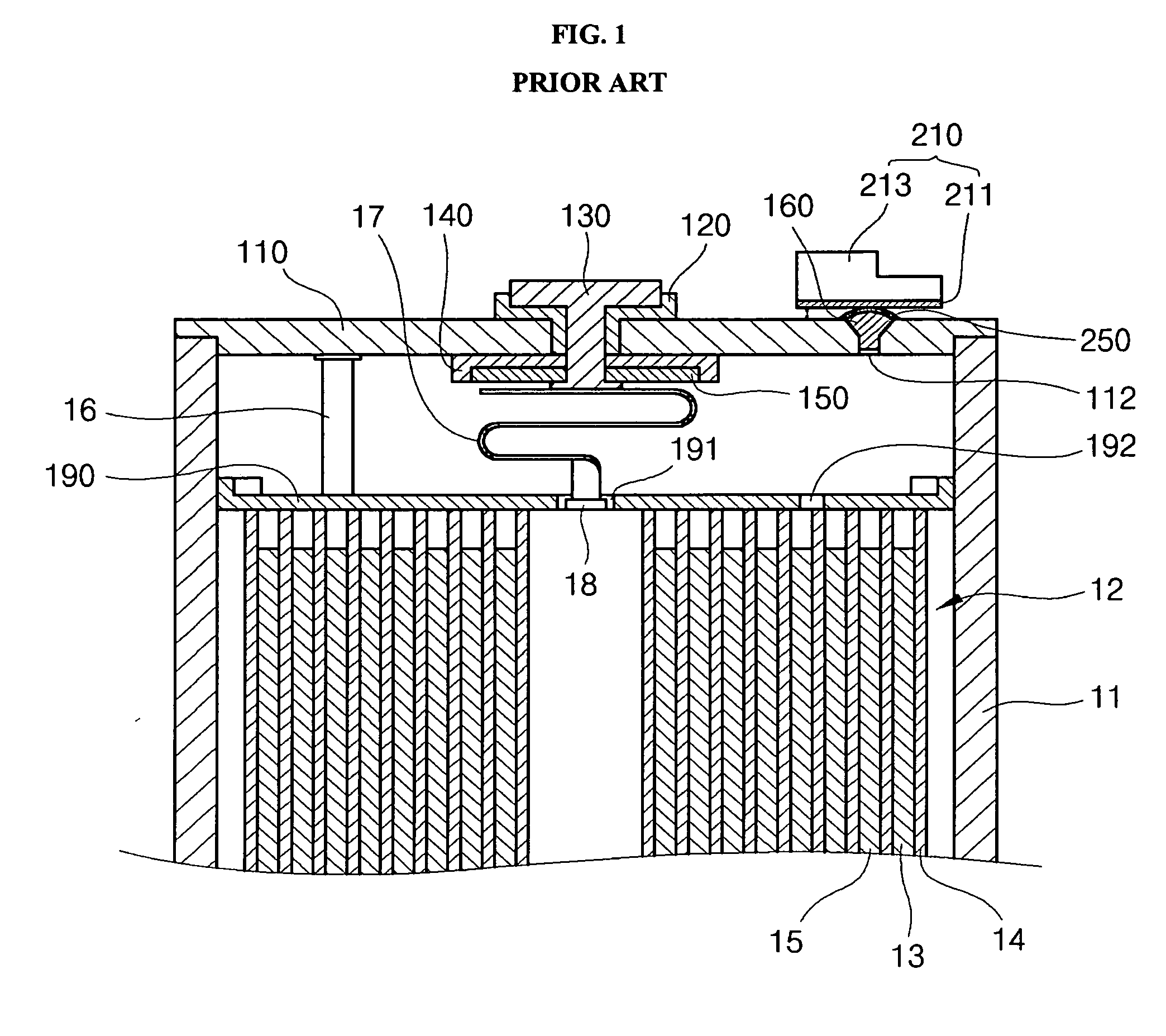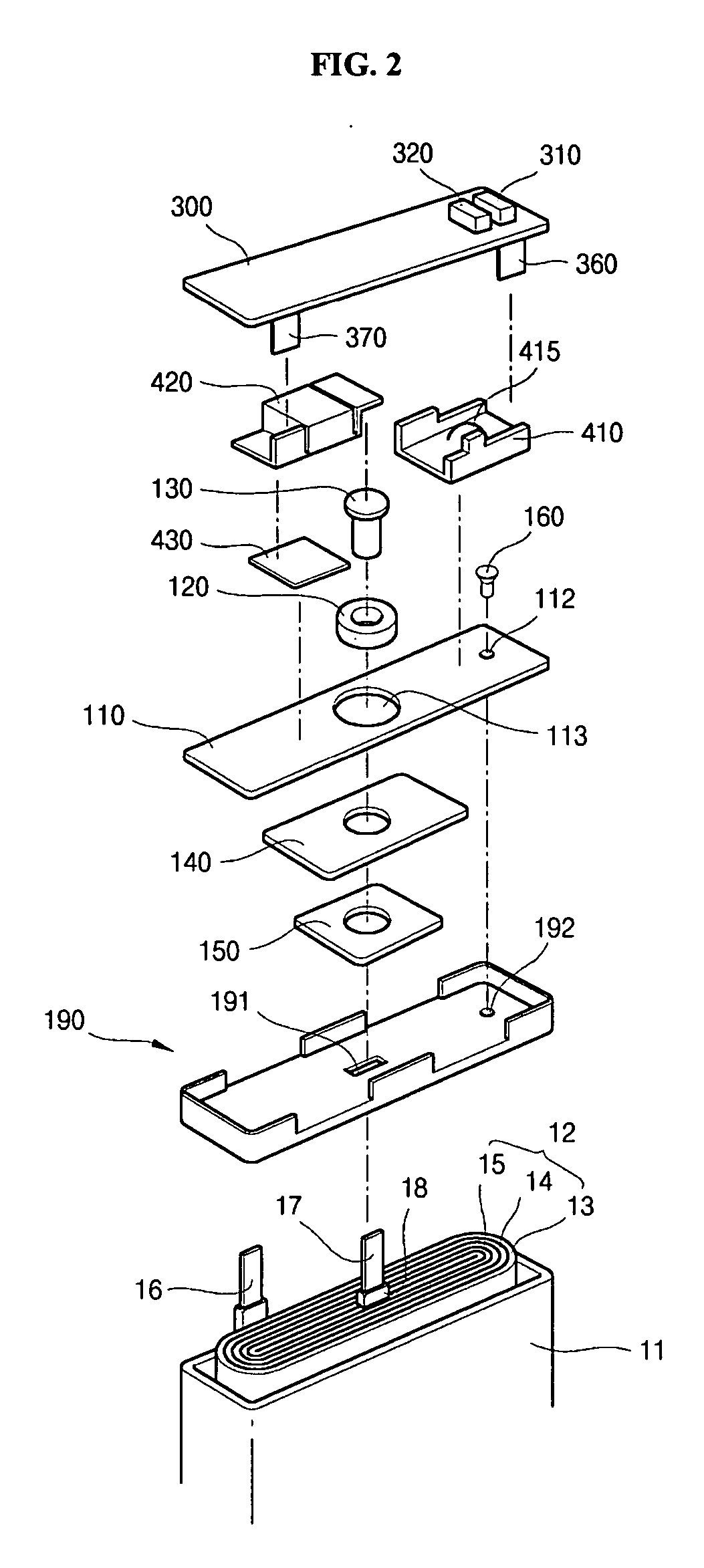Prismatic-type rechargeable battery with attached lead plate
- Summary
- Abstract
- Description
- Claims
- Application Information
AI Technical Summary
Benefits of technology
Problems solved by technology
Method used
Image
Examples
Embodiment Construction
[0029] Hereinafter, a preferred embodiment of the present invention will be described with reference to the accompanying drawings. In the following description and drawings, the same reference numerals are used to designate the same or similar components.
[0030]FIG. 2 depicts a lithium pack battery that has a bare cell which includes a can 11, a electrode assembly 12 contained in the can 11, and a cap assembly coupled to the open upper end of the can 11 for sealing it.
[0031] The electrode assembly 12 is formed by winding a positive electrode 13, a separator 14, and a negative electrode 15 from a thin plate or a film shape into an eddy shape. Insulating tapes 18 are wound about respective boundary portions wherein positive and negative leads 16 and 17 are led out of the electrode assembly 12, in order to prevent a short circuit between the two electrodes 13 and 15. The prismatic type can 11 is generally made of aluminum or aluminum alloy and is in the shape of a cuboid. The can 11 c...
PUM
 Login to View More
Login to View More Abstract
Description
Claims
Application Information
 Login to View More
Login to View More - R&D
- Intellectual Property
- Life Sciences
- Materials
- Tech Scout
- Unparalleled Data Quality
- Higher Quality Content
- 60% Fewer Hallucinations
Browse by: Latest US Patents, China's latest patents, Technical Efficacy Thesaurus, Application Domain, Technology Topic, Popular Technical Reports.
© 2025 PatSnap. All rights reserved.Legal|Privacy policy|Modern Slavery Act Transparency Statement|Sitemap|About US| Contact US: help@patsnap.com



